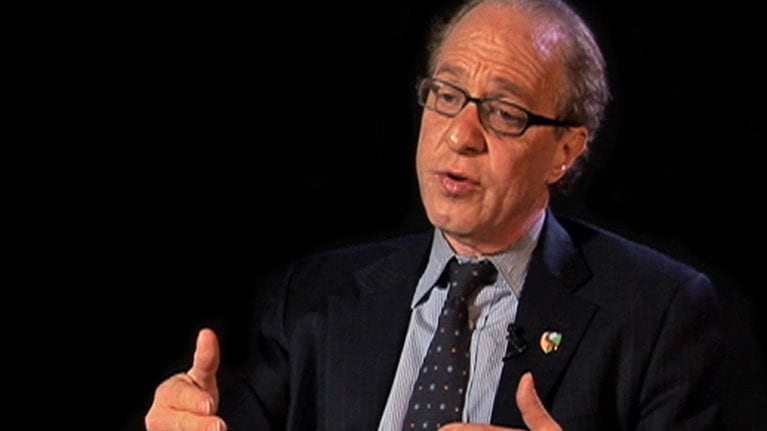The CEO of a leading consumer goods company was unhappy with his CIO. An important competitor was gaining market share at a disquieting pace by using social media and data analysis to target customers more effectively. When asked about these developments, the CIO outlined some potential responses, but he didn’t follow through on them. Instead, according to the CEO, the CIO remained preoccupied with “keep the lights on” IT projects and was therefore unable to gain traction with the business leaders and others within the company who would be critical in helping to address the new competitive challenge.
This type of disconnect—between what’s top of mind for CEOs and the attitudes and abilities of IT leaders—is all too common. The symptoms will be recognizable to many executives. IT leaders are often trapped in the status quo, their principal focus being to keep a company running in the face of sharply increasing demands and tight budgets. A lot have the desire but lack the capacity to deliver beyond basic IT needs.
Meanwhile, many CEOs we know confess they have little knowledge of where IT money is spent, how that spending squares with technology opportunities and threats, or how to improve the fit between dollars and strategic priorities. What’s more, the CEO’s engagement with the IT organization is fleeting, occurring primarily at budget time and thus reinforcing the idea that IT is a support function that should focus on low-cost service. That engagement can also be frustrating, as when delays and cost overruns plague big projects.
Dealing with this disconnect has acquired new urgency as the financial stakes rise1 and new technology trends—the growth of big data, the proliferation of smartphones, cloud computing, heightened levels of automation enabled by embedded sensors and the “Internet of Things”—shape strategy and disrupt business models in unprecedented ways.2
CEOs who aren’t continually asking themselves and their organizations how they can harness trends such as these to change the game are likely to get blindsided. To avoid that outcome, they need to shake things up by inserting themselves into the technology debate—difficult though that may be—and insisting that meaningful conversations take place.
As part of our work with McKinsey’s Center for Business Technology, which researches the role of technology in changing business models, we have identified several ways to provoke these discussions. One good way is to ask executives throughout the company whether (or how) competitors could be using technology to leave it behind. Another is to push leaders to broaden their line of vision to include technology shifts in other industries. These aren’t the only ways of framing the conversation, of course (for ideas on how senior executives can stir up organizational thinking about big data, see “Seizing the potential of ‘big data’”). But they are often a good starting point. To illustrate the benefits, we’ll focus on the experience of executives at an insurance company and a grocery retailer. These companies began using technology more strategically to reinvigorate themselves after their executives asked some tough questions.
Are we getting left behind?
In our experience, few leadership teams have clear visibility into how a company’s business technology capabilities—the combination of business processes and their supporting systems—stack up against those of competitors. Instead, top teams often rely on anecdotes and suppositions about perceived weaknesses or strengths as seen by business unit executives. These views can be erroneous or incomplete, and the murkiness often envelopes cutting-edge technologies and more traditional ones alike.
Vocal business unit leaders at a North American insurance company, for example, insisted that sluggish times to market for new products were an important factor behind its eroding market share. They also believed that poor IT systems—specifically, the software that supported pricing and helped adapt insurance products to local regulatory requirements—were responsible for the lagging product-development performance.
To get a reality check on these views, the insurer’s CEO and a business unit president tasked a team of business and IT managers to undertake a more rigorous benchmarking of the company’s business technology performance relative to competitors. The results were eye opening. The insurer learned that the initial concerns about its product-development capabilities were misplaced and that its performance in product introductions was on par with that of competitors.
In fact, the loudest voices at the table had distracted the leadership from the most important technology challenges the company actually faced: a lagging ability to handle straight-through underwriting and policy administration in the online channel. These systems were siloed by line of business, whereas top-performing competitors had redesigned their IT architecture and business processes to facilitate more standardized pricing across business lines. The competitors’ systems did just about everything—from assessing risk to running online channels—more quickly and cheaply than the company’s systems could. Worse, the CEO learned that his investment budget was being consumed by ongoing maintenance and enhancements to sustain the status quo rather than by efforts to support new functionality.
Armed with this knowledge, the business unit president started a debate among his colleagues in the top team. The discussions ultimately forced a critical series of trade-offs among the competing demands for the company’s technology-investment budget. In the end, he brought his team, the CEO, and eventually the board of directors together to support a major investment in renewing the company’s core IT platform and processes.
The lessons for the business leaders were clear: while they didn’t need to know the ground-level details of the company’s IT practices, a “hands off” policy had led to a poor view of the risks accumulating across the business units and thus to serious competitive blind spots. Going forward, the insurer established an IT capability review as part of its annual business strategy sessions. The review includes operational basics, market intelligence on competitors’ use of technology, and an analysis of the competitive gaps that might affect the company’s market share and financial performance.
What can we learn from other industries?
Looking beyond your industry to proven technology leaders is a good way to shake up your thinking.3 This seems simple, yet in our experience few leaders consistently look beyond their own industries for new technological insights and opportunities; instead, many cite time constraints or a lack of reliable processes for developing such intelligence.
A European grocery chain’s CEO was eager to discover a way to break through his industry’s revenue growth and margin boundaries. Grocers traditionally use a combination of traditional market research and gut instinct to shape their commercial strategies: the set of coordinated decisions—made around prices, promotion, communication, and product assortments—that drive revenues and sales volumes. When properly calibrated, these factors can swing margins by 1 to 2 percent, a huge amount given the industry’s slim margins.
The CEO had long watched retail and grocery industry pioneers that used data to better understand consumer behavior. Now he wanted to go further, spurred by the example of digital-media companies, airlines, and financial-services firms that change promotions and prices in real time by taking account of customer demand, supply constraints, and seasonal or regional factors, among other things. The CEO’s goal was to go even further and develop the ability to anticipate competitive reactions to various commercial strategies. He began by having managers, and even board members, visit and observe players in other industries to understand the current state of the art.
To emulate these practices, the company would need to start from scratch. While some vendors offered targeted research aids to help retailers position certain products, there were no software systems or standard approaches for creating the broad-based tools the CEO envisioned. The new tools would require an experimental approach to commercial strategy—one that allowed the grocer to model the way a range of variables (such as pricing, shelf displays, and advertising) affected performance in the past and then to see how useful those models would have been at predicting the future. The project would demand substantial IT investments and close support from the company’s marketers, sales operations professionals, and store managers.
The company started with 100 variables and back-tested them to select the 12 most important, which eventually formed the backbone of the new strategy-setting tool. So far, this approach has helped the grocer boost sales by 2 percent—increasing its market share without sacrificing profitability. What’s more, the “test and learn” methodology has allowed the company to decentralize some of its decision making, so that regional executives and managers, who tend to have the clearest view of fast-changing market conditions, are now empowered to make commercial decisions.
The swift and radical changes taking place today in the technology landscape create opportunities that extend far beyond IT’s traditional ambit. To seize them, CEOs should elevate the debate by asking targeted questions that push technology beyond its lights-on status and toward the core of a company’s ongoing strategy.


